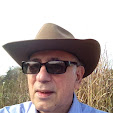In 2007, Murray Lerner, a Harvard graduate and East Coast film maker released his much awaited documentary of Bob Dylan at the Newport Folk Festivals that began 44 years earlier.
The Columbia DVD is a black and white masterpiece that all Dylan fans will much admire as it shows Dylan's transformation over 3 years, 1963, 1964 and 1965--from a newly arrived folk singer (much admired by Pete Seeger and others) into a star performer along with Joan Baez.
By 1965, the two-- Dylan and Baez- were the King and Queen of the festival. In fact, it was reported that Dylan and his queen paraded around aristocratic Newport with the former sporting a bull whip that he would periodically crack!
The highlight of the DVD is a 25 minute 'bonus' interview with Lerner in which he describes his inspiration(s) and his ideologies behind his minimalistic camera technique.
There are three major points that Lerner conveys to his viewers.
First, at Harvard he studied modern poetry and TS Eliot's objective correlative was all the rage. The idea, as Lerner explains is that poetry has the ability to communicate before it is understood. The poet would pick an image that would resonate with the idea you want to express without saying it.
Lerner relates the objective correlative to his filming technique: "What I'd like to express in film at the time was an emotion that clarified for the viewer new thoughts, new ideas brought to a new level... "
While T.S. Eliot would pick an image to express an emotion, (e.g. 'like a patient etherized upon the table' in Prufrock), Lerner would, in filming the Newport festival, have many unexpected juxtapositions of images that brings the viewer to a new level. An example of such an odd juxtaposition where you see a woman saying pop music is folk music and then you suddenly have Dylan playing an electric organ.
There is no narration in the film and it works by simple odd juxtapositions that make it flow.
Second, Lerner himself and his other cinematographers were instructed to minimize the movement of the camera. There is virtually no panning of the audience when Dylan is onstage. And for example, in Maggie's Farm where Dylan fades in and out of darkness, the camera does not move.
In 1965, when Dylan went electric, the camera angles up to Dylan's face providing a closeup of not only his expression and a dimple on his right side but also his now fashionable leather blazer.
Finally, Lerner discusses the afternoon workshop footage that is featured in all three years. Simply put, Dylan and other artists would offer sessions scattered around the center stage. While the evening sessions drew about 20,000 fans, the afternoon topical performances would attract crowds of 5,000!
The DVD is highly recommended. Perhaps one day, we will understand why Lerner waited over 40 years to share his stored footage with us!
Subscribe to:
Post Comments (Atom)


No comments:
Post a Comment